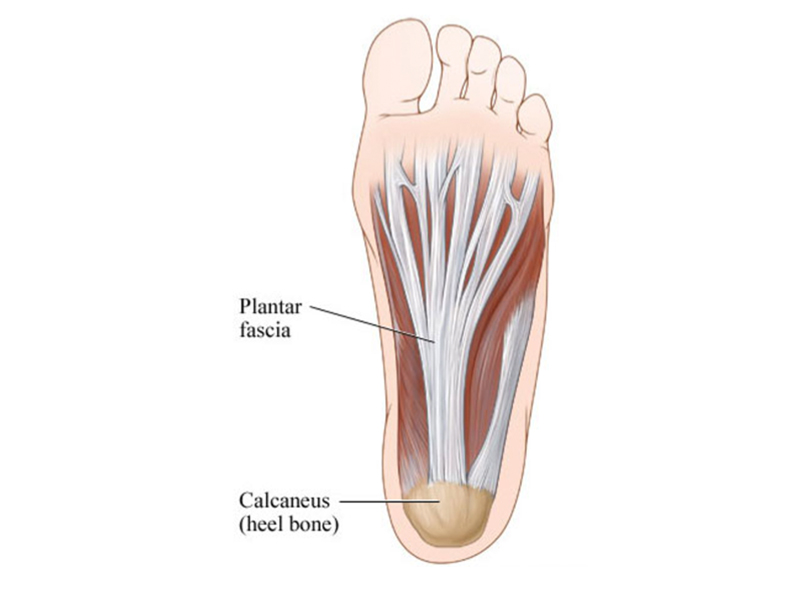Are you a runner with sore or tender heels that are made worse when walking barefoot on hard floors in Singapore? You may have plantar fasciitis! We find out more about this heel pain condition from DR NICHOLAS YEO ENG MENG of Activ Orthopaedic Centre. He also advises us on plantar fasciitis treatment to help get you back on your feet again!
What is plantar fasciitis and what causes it?
Plantar fasciitis is the most common cause of heel pain. The plantar fascia is a band of tissue on the bottom of the foot, which connects the heel bone to the toes and creates the arch of the foot. It’s designed to absorb high stresses, but sometimes too much pressure and strain irritates the tissue and results in heel pain.

This condition is common in runners and people who spend a lot of time standing and walking, particularly on hard surfaces. Certain foot shapes like flat feet and high arched feet are risk factors. Having a tight calf muscle is also associated with plantar fasciitis. And ill-fitting shoes with inadequate support only act to exacerbate the problem.
What does the heel pain feel like?
Individuals afflicted by this condition report an achy pain over the heel or along the bottom of the foot. This is typically on taking the first few steps in the morning or getting up after sitting for a period of time. It can sometimes manifest as a dull constant ache on standing and walking for long periods.
When should a doctor be consulted?
You should go and see a doctor if your heel pain persists beyond two weeks duration and is affecting your work or daily activities. If the heel pain is constant, present at rest, or following some form of trauma, it may be a sign of something more serious. Getting appropriate treatment early may prevent it from becoming a chronic problem.

What are the plantar fasciitis treatment options?
First-line plantar fasciitis treatment involves calf stretches, plantar fascia stretching and rolling a tennis ball along the bottom of your foot. You should do five sets of one minute stretches per exercise. These exercises should be performed three times a day and before and after any strenuous activity. Getting fitted with a customised insole and wearing a night splint can sometimes help too.
Second-line treatment includes Extracorporeal Shockwave Therapy (ESWT) and ultrasound guided injections. ESWT is a non-invasive treatment option that involves three sessions, each lasting around 15 minutes. It works by stimulating healing of the injured tissue. Injections are performed with the aid of ultrasound guidance for more accuracy in placement. Both cortisone and platelet rich plasma (PRP) can be administered in this manner.
Third-line options are reserved for patients who have recalcitrant plantar fasciitis. These are those who do not respond to first- and second-line treatment and make up typically less than 20 percent of patients. Endoscopic (keyhole) surgery to address both the plantar fascia and tight gastrocnemius muscle is a procedure that gives excellent results for these sufferers.

What else should we know about plantar fasciitis?
Heel pain from plantar fasciitis is actually quite common. Do seek help from a specialist if you’re experiencing heel pain that’s affecting your lifestyle. Getting appropriate treatment early will go a long way towards improving your quality of life and preventing chronic pain.
About the doctor
Dr Nicholas Yeo is a senior consultant Orthopaedic Surgeon who specialises in foot, ankle, sports and reconstructive surgery; he’s the founder of Activ Orthopaedic Centre, where he helps to identify, treat and heal plantar fasciitis in patients.
#17-09 Mount Elizabeth Medical Centre, 3 Mount Elizabeth
6734 9394 | 8522 6920 | appointments@activortho.sg
activortho.sg
This article first appeared in the November 2023 edition of Expat Living. You can purchase the latest issue or subscribe so you never miss a copy!
To make the most of living in Singapore, read our latest City Guide here for free!





